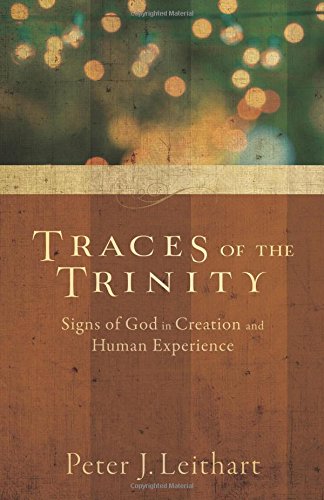Concerning Peter Leithart’s new book, Traces of the Trinity John Frame writes:
This is the most delightful book I have read in a long time. One of its delights is its clear, gracefully written prose, which easily engages the reader. The book presents a cogent case for a highly significant point: the whole created world images the divine Trinity. Leithart argues this thesis comprehensively, demonstrating that the divine perichoresis–the mutual indwelling of the three persons of the Trinity – is reflected in every area of human life, including perception, thought, language, sex, time, space, music, and imagination. Leithart’s argument has the potential, therefore, to bring major change to our study of all these areas of reality, and thus to all the ways we live in the world.
Keep an eye out for our coming Interview with Dr. Leithart, as he talks to us about his new book. Meanwhile, here is an excerpt from his Preface, reprinted here with the kind permission of Brazos Press.
Preface
Godly speculation can have an edifying function.
– John Frame
This is a book of theological speculation. The particular form of speculation has a long pedigree in Christian theology, present in seminal form already in Augustine and the Cappadocians and developed through the centuries under the heading of vestigia Trinitatis, which might be translated as “traces of the Trinity.” The aim is to discover and lay bare echoes, vestiges, traces, clues to trinitarian life within the creation. 1 This tradition has fallen on hard times in some circles of late, for reasons I explore briefly in the postscript. I think that unfortunate, and hope that this essay will contribute to a revival of this neglected area of theological speculation.
My goal is, more specifically, to point to the traces of what theologians call “perichoresis” in creation and in human experience. Perichoresis means “mutual indwelling,” or “reciprocal penetration,” and describes the exhaustive mutual indwelling of the persons of the Trinity, the mystery of the Father’s being in the Son that is eternally simultaneous with the Son’s indwelling of the Father, and their mutual dwelling in the Spirit.
What I offer is not doctrinal speculation. Nothing I say here violates any point of trinitarian dogma, and, unlike some other writers who have written on perichoresis, I make no suggestions for “revising” or “enhancing,” much less for “correcting,” trinitarian orthodoxy. I’m not opposed in principle to such efforts. We still have much to learn about the Triune God from Scripture. But that is not my aim in this essay. Instead of doctrinal speculation, I seek to extend trinitarian categories and patterns of thought to creation. This is an exercise in Trinitarian “worldview.” ….
… My starting point is the biblical and redemptive-historical revelation of the Trinity, along with the dogmatic and doctrinal tradition of trinitarian theology, and, assisted by a number of recent theologians, I attempt to discern how trinitarian theology illuminates the world we live in. My opening assumption is simple-minded: Christians believe that the Triune God created the world, and that should have some implications for the kind of world that it is. Many Christians have acknowledged the perichoretic shape of the life of the Trinity, and that in particular should leave some trace in the world that has been made and remade by the Father, Son, and Spirit. Instead of working up to the Trinity from creation, this book looks through the doctrine of the Trinity to see if it illumines the way the world is. I believe it does, and I hope the results are edifying.
